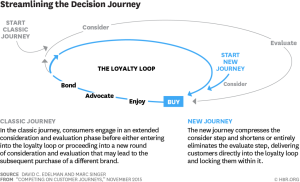I’d like to share some sobering statistics about higher education and employment:
- In the United States, students graduate from college with an average debt load of nearly $29,000.
- Total student debt in the U.S. is $1.23 trillion and rising.
- 47% of college-educated workers under 25 work in jobs
that do not require a college degree. - Worldwide, 73.3 million people under the age of 25 are unemployed,
representing 36.7% of total global unemployment. - In the United States in 2015, 32% of employers reported
struggling to find qualified workers. - By 2020, 65% of all jobs in the United States will require some
form of postsecondary education or training. - By 2020, the shortfall of postsecondary-educated Americans will
approach 20 million. - 47% of jobs in the United States will be significantly impacted by artificial intelligence and automation within the next decade.
Over the next week, I’ll be blogging about and sharing excerpts from The Association Role in the New Education Paradigm, the eighth white paper in the ongoing Spark collaborative series.
Written with Shelly Alcorn, CAE (Alcorn Associates Management Consulting), the white paper reviews research on the disruptions currently affecting both K-12 and postsecondary education, talks about the future of a workforce impacted by skills gaps and automation, and details what Shelly and I believe to be inherent association advantages in being part of the solution to this significant global socioeconomic problem.
The white paper also features sidebars by Tracy Petrillo, EdD, CAE, Chief Learning Officer, EDUCAUSE (and recent recipient of ASAE’s Professional Performance Award), discussing Competency-Based Education, and by Polly Siobhan Karpowicz,MBA, CAE, ASAE Research Committee, on new research the ASAE Foundation is undertaking in this area.
We also share case studies of organizations doing excellent work preparing their audiences for the future of employment:
- HR Certification Institute
- Maryland Association of CPAs
- National Association of Licensed Practical Nurses
- Ohio Society of Certified Public Accountants
The white paper concludes with practical advice for associations that are eager to get started reshaping education, the employment market, and lifetime learning for the professions and industries you serve.
I’ll be blogging more about the white paper this week, but in the meantime, download your free copy of The Association Role in the New Education Paradigm at http://bit.ly/29CIquL, no divulging of information about yourself required.
And don’t forget to check out the other FREE Spark whitepapers, too:
- Attention Doesn’t Scale: The Role of Content Curation in Membership Associations (with Jeff De Cagna, FRSA, FASAE), available at http://bit.ly/WVpP4a
- Member Relations: An Association-Centric Approach to Customer Relationship Management (with George Breeden, MBA, CAE and featuring Lehman Reports data), available at http://bit.ly/10s8UUb
- The Mission Driven Volunteer (co-authored with Peggy Hoffman, CAE), available at http://bit.ly/13Wwe1F
- Risk: The Missing Link Connecting Strategy to Implementation (co-authored with Jamie Notter and Leslie White), available at http://bit.ly/MJ5oo8
- Getting to the “Good Stuff”: Evidence-Based Decision Making for Associations (co-authored with Peter Houstle), available at http://bit.ly/1jwXcDX
- Leading Engagement from the Outside-In: Become an Indispensable Partner in Your Members’ Success (co-authored with Anna Caraveli), available at http://bit.ly/1GPNUM6
- Innovate the Lean Way: Applying Lean Startup Methodology in the Association Environment (co-authored with Guillermo Ortiz de Zárate), available at http://bit.ly/1NJJzkJ
